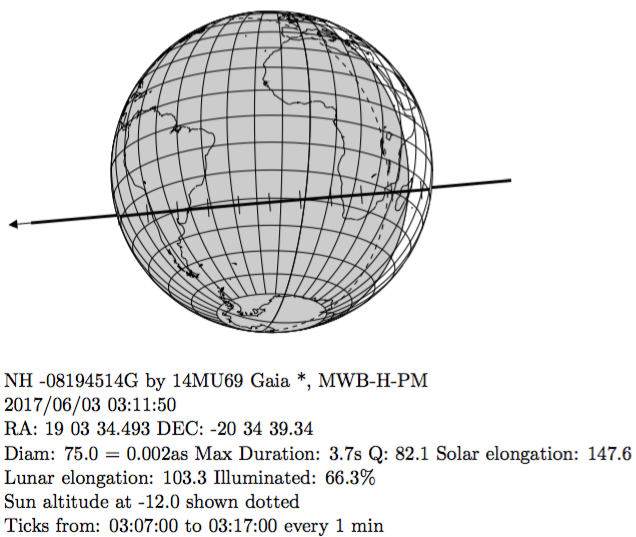The motivation for this question comes from this question. A star is named in the occultation prediction shown below, from AsteroidOccultations.com's News & Announcements for 2014 MU69 on 2017-Jun-03 03:11.
I believe that the star is in the Omega Centauri cluster, and I believe it is between +12 and +14 visual magnitude roughly. The name given in the prediction is NH -08194514G The location shown in the prediction is R.A: 19 03 34.493 DEC -20 34 39.34 but according to Wikipedia the coordinates of the cluster are roughly R.A. 13h 27m, DEC. -47deg, 29m.
I need help understanding why the two coordinates seem so different (am I misunderstanding the prediction?) and finding out how to look up this particular star’s visual magnitude by using its name. I’ve tried a few quick searches but realized that I was over my head and not likely to get the right information.
From the linked question:
People have fanned out over South America and South Africa with telescopes with cameras and GPS clocks and have attempted to watch the shadow of a roughly magnitude +13 star cast by a rock in the KUIPER BELT pass over the Earth!
Early Twitter reports reported clear skies and images of the Omega Centauri star cluster. There is a Twitter hash tag for these events, #mu69occ. Here is a 500 millisecond exposure from a few days before the occultation. The short exposure time is necessary to resolve small scale debris from the main occultation.
above: Omega Centari Star Cluster, 500 millisecond exposure. Tweeted by Alex Partker.
The goal is actually to look for shadows cast by even smaller debris, orbiting around the rock in the Kuiper belt. This is for New Horizons mission planning.
above: From AsteroidOccultations.com's News & Announcements for 2014 MU69

